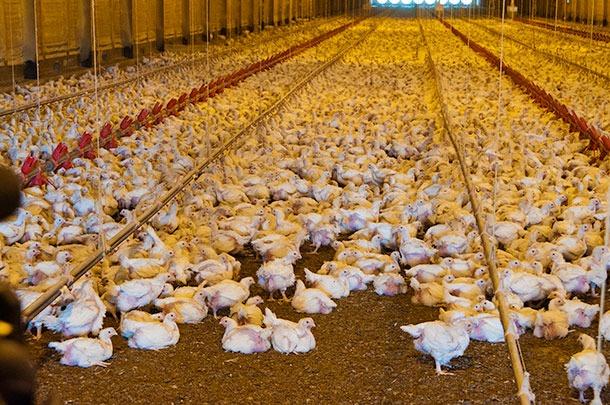As demand for organics grows, the US relies more on imported products
The growing trend of consumers in the US who buy and eat organic meat fuels the need for more organic grain, particularly the feed for broiler chickens.
The organic food market in the US has been growing rapidly, around twenty percent per year. Yet data from the US Department of Agriculture indicates that US farmers aren’t meeting the demand for organics, so much of the supply is imported from outside the US.
Importing organics can be problematic: The process is vulnerable to fraud, and some products are routinely sprayed with chemicals during the process of clearing customs, according to Anna Casey of the Midwest Center for Investigative Reporting.
“There has been a huge increase in demand for organic products among US consumers in the last decade or so, and in order to meet that demand we’re actually importing about 75 percent of organic soybeans and about half of organic corn that we use,” Casey says. “A lot of what accounts for that increase in demand is meat, for example. Americans are consuming a lot of broiler chickens that are certified organic and that requires organic beans. So, we’re getting those beans from other countries as opposed to growing them here.”
Organic corn imports come primarily from Turkey and the United Kingdom; organic soybeans come from India, Turkey and Argentina.
According to Casey, American farmers have trouble meeting demand for organic foods in part because getting started can be difficult. In order to get an organic certification, land has to be chemical-free and free of synthetic fertilizers for three years.
“So, while the price premium is much higher for growing organic, a lot of people are reluctant to go through that three-year transition period,” she explains. “It also requires a shift in perception and it requires gaining some new knowledge of organic farming. Not only are you going to have to find more labor, it’s going to require crop rotation and investing in conservation practices on your farm.”
Farmers who rely on GMO seeds and chemicals on their farms will take a little while to get the process right, Casey adds, but, “as one farmer told me, it’s really a matter of investing in the soil. He shares ideas with other farmers, both organic and conventional. I think finding that community of farmers who can help is really critical in the transition.”
Casey has been spending time talking to both conventional and organic farmers and says she is seeing a growing awareness of the benefits of moving toward organic practices, despite the challenges.
“If farm incomes continue to be the way they are, with the margins so tight for conventional farmers, I think we’ll definitely see more conventional farmers switch to the organic corn and soybeans,” she says.
This article is based on an interview that aired on PRI’s Living on Earth with Steve Curwood.
